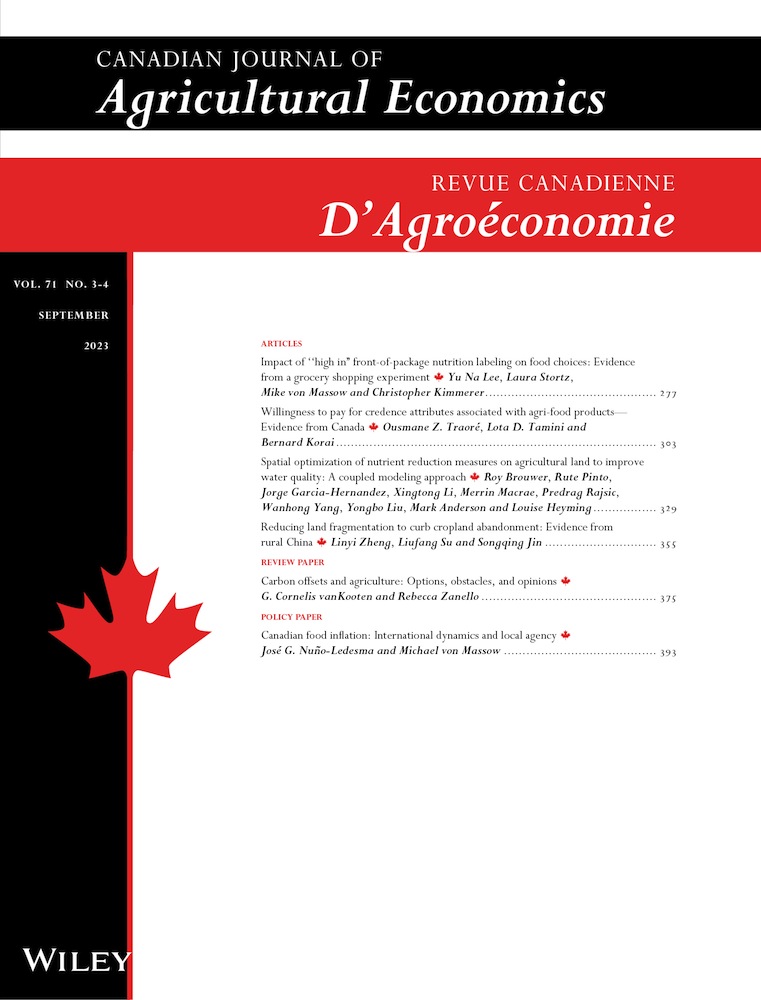On the economics of meat processing, livestock queuing, and worker safety
IF 2.1
2区 经济学
Q2 AGRICULTURAL ECONOMICS & POLICY
Canadian Journal of Agricultural Economics-Revue Canadienne D Agroeconomie
Pub Date : 2022-03-03
DOI:10.1111/cjag.12303
引用次数: 1
Abstract
Meat processing plants use inputs in fixed proportions, but these proportions vary with plant size. Shocks to the supply of labor and livestock induce allocative inefficiency, output reductions, and higher unit costs of production. Both labor conflicts and the pandemic caused long labor shortages resulting in unused capacity and large livestock queues. Industry concentration and vertical integration can mitigate some of these problems by internalizing queuing costs and by reallocating workers across plants. Daily shocks make plants operate with either too many workers or too many live animals. Larger plants choose to be labor-constrained more frequently, creating a trade-off between wages and safety for workers.
关于肉类加工、牲畜排队和工人安全的经济学
肉类加工厂按固定比例使用原料,但这些比例因工厂规模而异。对劳动力和牲畜供给的冲击导致配置效率低下、产出减少和单位生产成本上升。劳资冲突和疫情都造成了长期的劳动力短缺,导致产能闲置,牲畜排起了长队。行业集中和垂直整合可以通过内部化排队成本和跨工厂重新分配工人来缓解其中的一些问题。每天的电击使工厂要么有太多的工人,要么有太多的活体动物。较大的工厂更频繁地选择劳动力限制,在工人的工资和安全之间做出权衡。
本文章由计算机程序翻译,如有差异,请以英文原文为准。
求助全文
约1分钟内获得全文
求助全文
来源期刊
CiteScore
23.20
自引率
1.10%
发文量
19
审稿时长
>36 weeks
期刊介绍:
The Canadian Journal of Agricultural Economics/Revue canadienne d'agroeconomie (CJAE) serves as a platform for scholarly research in agricultural, resource, and environmental economics, covering topics such as agri-food, agri-business, policy, resource utilization, and environmental impacts. It publishes a range of theoretical, applied and policy-related articles.

 求助内容:
求助内容: 应助结果提醒方式:
应助结果提醒方式:


